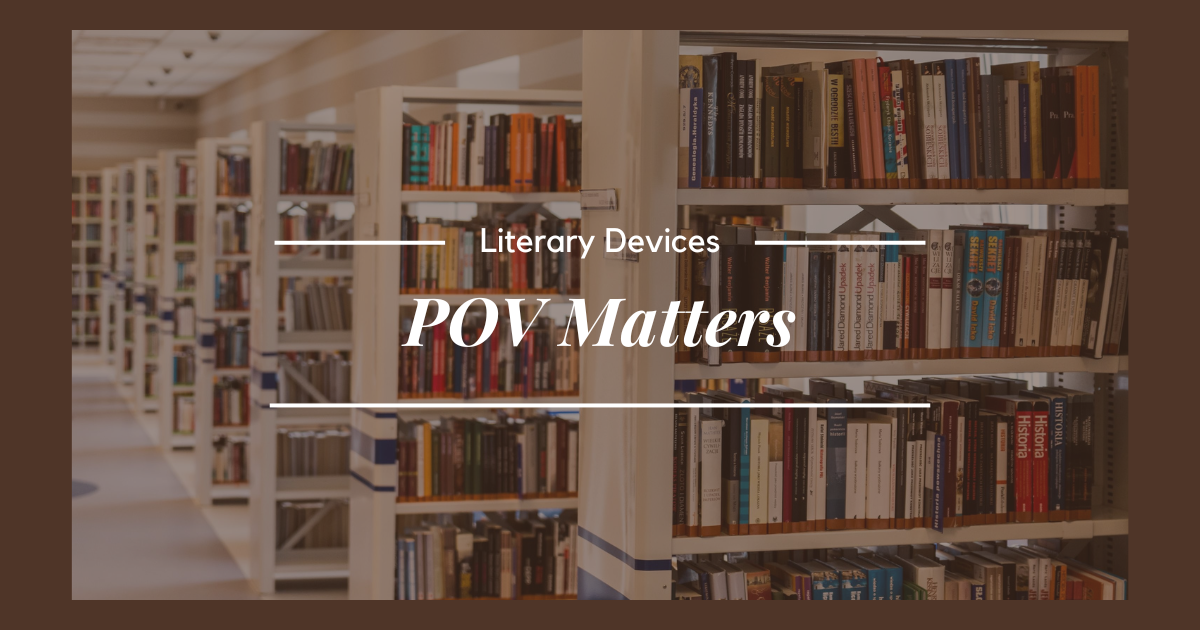I’ve observed a trend on bookish social media of readers intentionally choosing books with specific POV types. For example, only reading books narrated in first person. Which I find interesting, because I will read almost anything.
But, it is true that the POV shapes your entire reading experience, dictating how much you know about the characters and their inner worlds. And knowing which you’re in the mood for may help you pick out your next read.
So, let’s talk about it.
First Person POV: The “I” Perspective
In first person POV, the narrator is a character within the story (usually the main character), recounting events from their own perspective using “I” or “we.” This POV creates a deep, intimate connection with the narrator, allowing you to see the world through their eyes.
Pros
- Emotional Depth: You gain direct access to the narrator’s thoughts, feelings, and motivations, fostering a strong emotional bond
- Subjective Experience: The story feels personal and immediate, as if you’re living it alongside the narrator
- Authenticity: It can lend authenticity and relatability, especially in genres like memoirs or coming-of-age stories
- Easy to read: This is often a default narrative type, so sometimes our brains can process these types of stories faster and easier.
Cons
- Limited Perspective: You only know what the narrator knows, which can be restrictive if you crave a broader understanding of the story’s world or other characters
- Reliability Issues: The narrator might be biased, unreliable, or unaware of key facts, which can complicate the reader’s understanding of the true events
- Note: sometimes an unreliable narrator is the point! So it really all depends on the author’s goals here.
Second Person POV: The “You” Perspective
This POV is less common and can be found in interactive fiction or experimental narratives. It’s when the narrator uses the “you” pronoun.
This could imply a number of different situations: the narrator could be writing a series of letters to someone (like A Dowry of Blood or We Are the Light), it could be a collection of diary entries and the narrator is addressing the diary itself (The Diary of a Wimpy Kid), or the narrator is telling this story to someone and it’s your job to figure out who is narrating (The Six Deaths of the Saint). In some scenarios, the book could actually be making the reader part of the story.
I have to say, this is one of my favorite types of POVs because it’s rare, and it often creates a lot of mystery and intrigue right off the bat.
Pros
- Immersive: By addressing “you” directly, it can create a highly engaging experience and often gives you plenty of discovery to do
- Unique and Innovative: It stands out due to its rarity and can provide a fresh, unique reading experience
Cons
- Challenging: Some readers find it difficult to immerse themselves in a narrative where they’re directly addressed
- Limited Use: It’s challenging to maintain for a full-length novel without becoming repetitive or tiresome
- Note: the really good novels find a way to break the mold or twist the narrative so it doesn’t have a chance to grow stale
Third Person POV: The “He/She/They” Perspective
In third person POV, the narrator is an external observer using “he,” “she,” “they,” or characters’ names. There are two main subtypes: third person limited and third person omniscient.
Third Person Limited
The narrator knows the thoughts and feelings of one character, focusing closely on their experiences.
Pros
- Balanced Insight: Offers a balance between intimacy and objectivity, providing access to a character’s inner world while maintaining some narrative distance
- Flexibility: Allows for shifts in perspective if needed, without the deep immersion of first person
Cons
- Limited Scope: Still confines the narrative to one character’s perspective like first person, which can be restrictive in complex stories
Third Person Omniscient
The narrator knows everything about all characters and events, offering a god-like perspective.
Pros
- Comprehensive: Provides a broad, all-encompassing view of the story’s world, including multiple characters’ thoughts and backstories
- Complex Narratives: Ideal for intricate plots with multiple storylines and a large cast of characters
Cons
- Emotional Distance: Can create a sense of detachment, making it harder for readers to form a deep connection with any one character
- Overwhelming Detail: Risk of overwhelming the reader with too much information or too many perspectives
Consider your preferences, but also your mood.
Exploring different types of POV can deepen your appreciation for storytelling and enrich your reading experience. But, picking one that doesn’t align with your mood can definitely put a damper on things.
Let’s say you’re in the mood for something that will immerse you in a single character’s mind so you can experience their full emotional depth. You’ll want a first person POV for that. And if you pick up third person omniscient instead, you’ll probably get frustrated by the constant character switches. Vice versa if you’re looking for something to give you a broad scope of a world and objective storytelling.
Happy reading!
I would love to have you around! Subscribe below.
Check out some of my other recent blogs:








One response to “The Power of Perspective: First, second, and third person POV”
Great review!